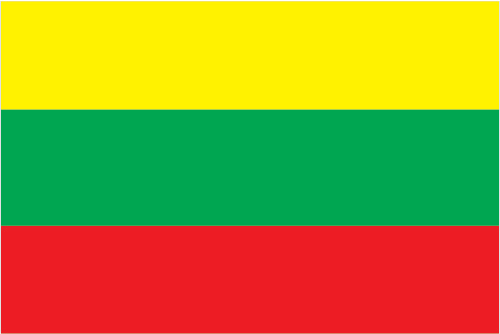
Lithuanian lands were united under MINDAUGAS in 1236; over the next century, through alliances and conquest, Lithuania extended its territory to include most of present-day Belarus and Ukraine. By the end of the 14th century Lithuania was the largest state in Europe. An alliance with Poland in 1386 led the two countries into a union through the person of a common ruler. In 1569, Lithuania and Poland formally united into a single dual state, the Polish-Lithuanian Commonwealth. This entity survived until 1795 when its remnants were partitioned by surrounding countries. Lithuania regained its independence following World War I but was annexed by the USSR in 1940 - an action never recognized by the US and many other countries. On 11 March 1990, Lithuania became the first of the Soviet republics to declare its independence, but Moscow did not recognize this proclamation until September of 1991 (following the abortive coup in Moscow). The last Russian troops withdrew in 1993. Lithuania subsequently restructured its economy for integration into Western European institutions; it joined both NATO and the EU in the spring of 2004. In January 2014, Lithuania assumed a nonpermanent seat on the UN Security Council for the 2014-15 term.
peat, arable land, amber
arable land: 33.48%
permanent crops: 0.47%
other: 66.05% (2011)
3,505,738
country comparison to the world: 134
note: Statistics Lithuania (the national statistical agency of Lithuania) estimates the country's total population at the start of 2013 to be 2,971,905, which takes into account the findings of Lithua
Lithuanian 84.1%, Polish 6.6%, Russian 5.8%, Belarusian 1.2%, other 1.1%, unspecified 1.2% (2011 est.)
Roman Catholic 77.2%, Russian Orthodox 4.1%, Old Believer 0.8%, Evangelical Lutheran 0.6%, Evangelical Reformist 0.2%, other (including Sunni Muslim, Jewish, Greek Catholic, and Karaite) 0.8%, none 6.1%, unspecified 10.1% (2011 est.)
Lithuanian (official) 82%, Russian 8%, Polish 5.6%, other 0.9%, unspecified 3.5% (2011 est.)
definition: age 15 and over can read and write
total population: 99.7%
male: 99.7%
female: 99.7% (2011 est.)
Vilnius
parliamentary democracy
11 March 1990 (declared); 6 September 1991 (recognized by the Soviet Union); notable earlier dates: 6 July 1253 (coronation of MINDAUGAS, traditional founding date), 1 July 1569 (Polish-Lithuanian Commonwealth created)
Independence Day, 16 February (1918); note - 16 February 1918 was the date Lithuania declared its independence from Soviet Russia and established its statehood; 11 March 1990 was the date it declared its independence from the Soviet Union